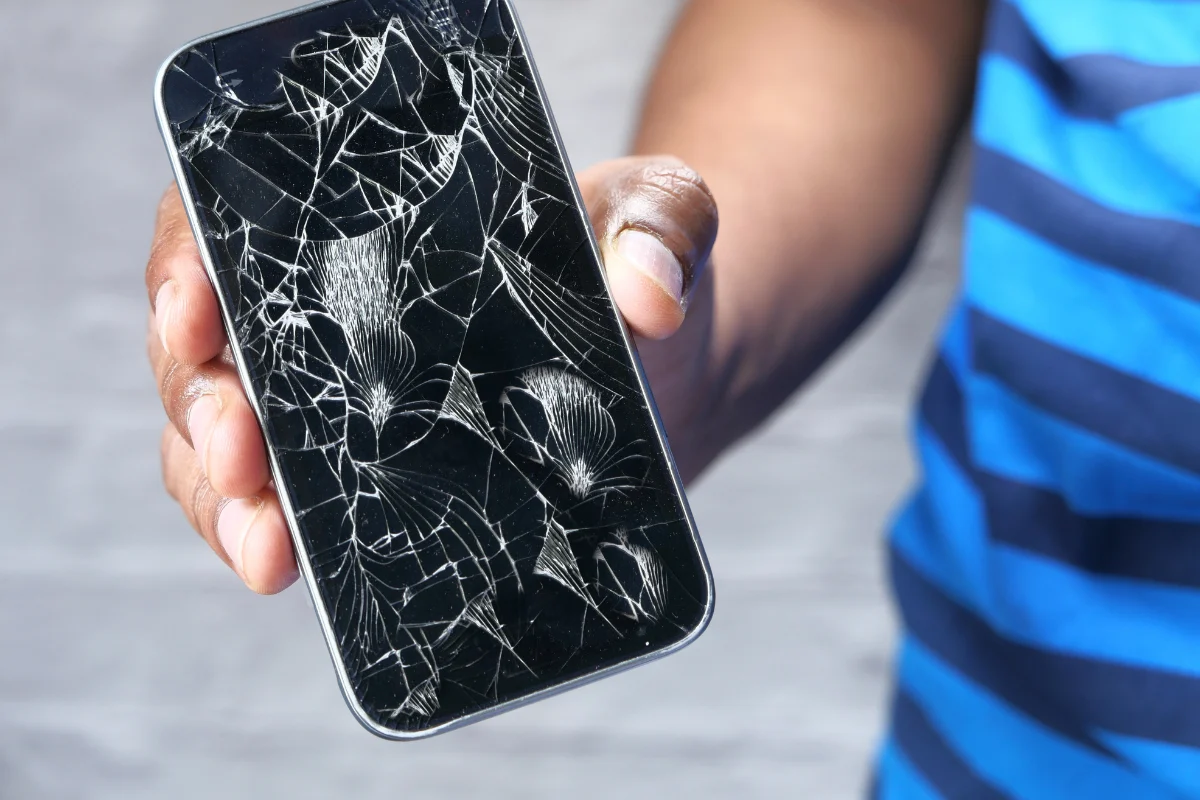Water damage is one of the most common (and sneaky) issues that can affect your phone. Water can silently wreak havoc on your device’s internal components, whether it’s a quick drop in the sink or exposure to high humidity. And the signs aren’t always obvious at first.
While many smartphones today come with some level of water resistance, they aren’t waterproof forever. Tiny cracks or long-term use can compromise those protections.
That’s why it’s crucial to recognize the early warning signs of water damage before they lead to permanent failure.
In this guide, we’ll discuss the most noticeable signs that your phone has come into contact with water and what you should look for before it’s too late to save it.
Why Water Damage Is Dangerous for Phones
Water might seem harmless, but it can disrupt the delicate electronics inside your phone in more ways than one. Even a small amount of moisture can start a chain reaction of problems, both immediate and long-term.
Some key risks of water exposure include:
- Short-Circuiting Components: Moisture can create unintended paths for electricity, damaging essential chips and circuits.
- Corrosion over Time: Internal parts, primarily metal contacts and battery connectors, can corrode, even days after exposure.
- Battery Swelling or Leakage: Water intrusion may lead to chemical reactions inside the battery, causing it to swell or fail.
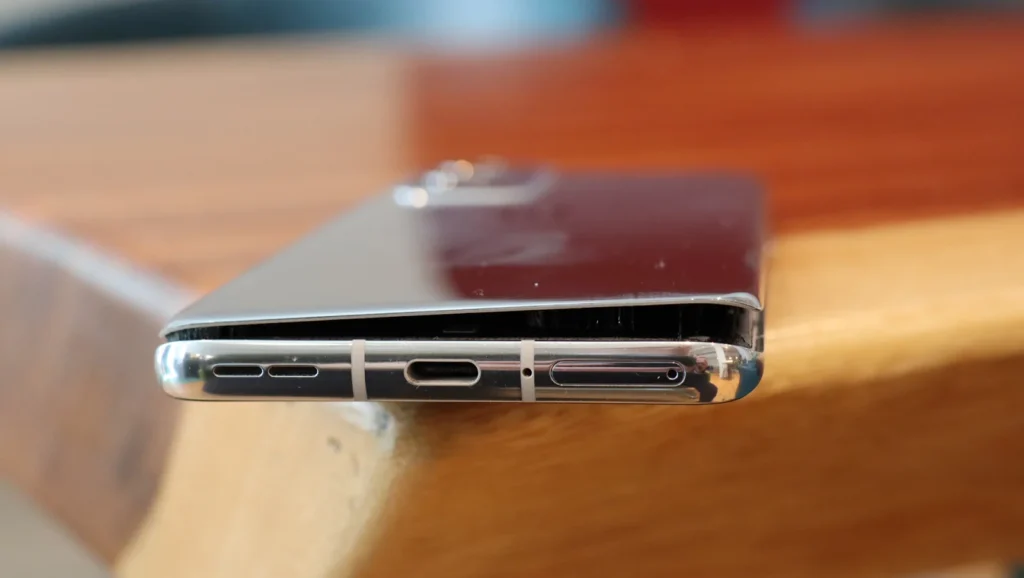
- Sensor and Port Malfunction: Proximity sensors, charging ports, and headphone jacks are particularly vulnerable to moisture damage.
- Void Warranty: Most manufacturers treat water exposure as accidental damage, often excluding it from warranty coverage.
Recognizing these risks early can help prevent further deterioration and save your device from becoming irreparable.
Physical Signs of Water Exposure
If your phone has been exposed to water, some of the clues might be hiding in plain sight. Here are the five most common physical indicators that moisture may have found its way inside.
Fog or Moisture Under the Screen
One of the first signs is a foggy or hazy look beneath your display glass. This could appear as blurred spots or rainbow-colored light refractions. It’s a clear sign that condensation is trapped inside, affecting the screen’s visibility and possibly the touch response.
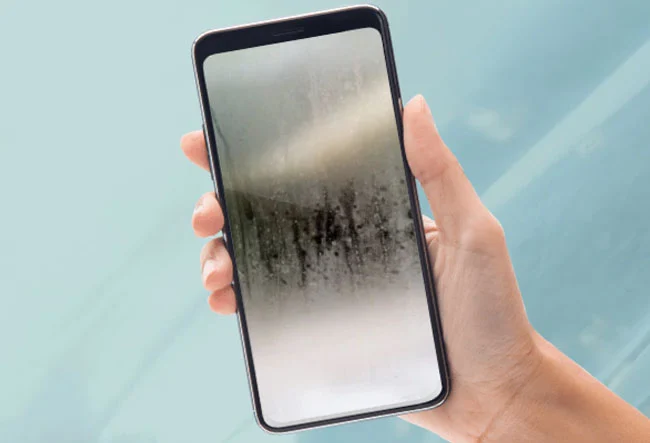
Corrosion or Discoloration in Ports
Inspect the charging port, headphone jack, and SIM tray. If you notice greenish or white discoloration or a metallic smell, it’s likely corrosion caused by liquid exposure. Use a flashlight to check these areas carefully.
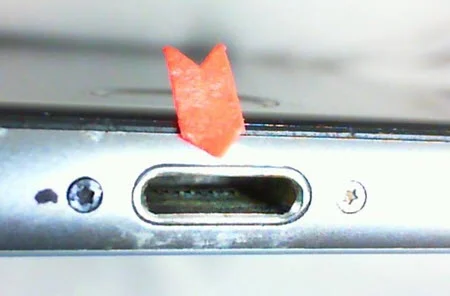
Water Residue in Camera or Flash
If you see droplets or smudges inside the camera lens or around the flash module, it’s more than just a dirty lens. Water may have seeped in, which can distort photos and reduce camera performance.
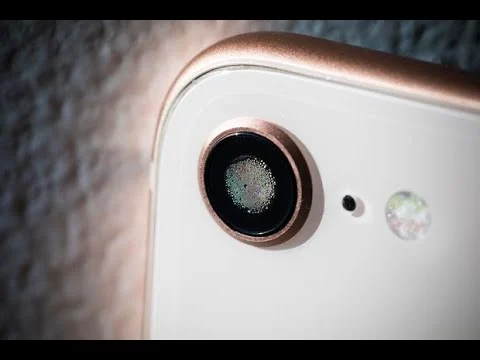
Swollen or Warped Casing
A swollen phone body or a slight bulge in the back cover could point to battery damage caused by water. This is a serious issue that may worsen if ignored.
Sticky or Dirty Ports
Ports that attract more lint or have a sticky, grime-like buildup often signal dried-up water mixed with dust or debris. It may block connections or charging functions.
Spotting these early physical cues can help you avoid bigger issues.
Functional Symptoms That May Indicate Water Damage
Even if your phone looks fine on the outside, water damage can affect how it performs. If your device starts behaving oddly after getting wet (or even after being in a humid environment), it’s worth checking for these functional symptoms.
Unresponsive or Ghost Touch Screen
Suppose the screen starts acting on its own, registering phantom touches, or doesn’t respond accurately to your input. In that case, it might be due to moisture interfering with the digitizer beneath the glass.
Distorted or No Audio
Having water in the speaker grills or internal circuits may muffle sound, make it crackly, or silence it altogether. It applies to calls, media, and even ringtones.
Random Reboots or Freezing
Unexplained system crashes, freezing during use, or boot loops can indicate short-circuited components caused by residual moisture.
Connectivity Issues
Wi-Fi, Bluetooth, or cellular signals may become unstable or fail to connect. This is often related to damage in internal antennas or chips affected by water.
Slow Charging or Not Charging
If your phone charges slowly, gets hot while charging, or doesn’t charge at all, the USB port or internal battery connectors might be corroded due to moisture exposure.
These symptoms may not show up immediately. Sometimes, water damage causes a gradual decline in performance over days or even weeks. Noticing these changes early can give you a better chance to act before things worsen.
How to Use the Liquid Contact Indicator (LCI)
Most modern smartphones include a built-in Liquid Contact Indicator (LCI), designed to show whether the device has been exposed to water. These indicators are tiny stickers or panels located near ports like the SIM tray or charging port.

Under normal conditions, the LCI appears white or silver. When it comes into contact with water or a liquid with similar properties, it turns red or pink. The change is permanent and can’t be reversed, even if the phone dries later.
To check it, use a SIM ejector tool to open the SIM tray and shine a light inside. Look closely for the sticker. If it shows red or pink, your phone has been exposed to moisture.
Technicians and manufacturers often reference this indicator to determine warranty eligibility, so it’s helpful to check it yourself before seeking support or repairs.
Common Myths About Water Damage Signs
There are a lot of misconceptions about how water damage presents itself. Believing these myths can delay proper action.
- “If the phone works, there’s no damage.” – Internal corrosion can begin without any immediate symptoms.
- “Just drying it with rice solves everything.” – Rice may absorb some moisture, but doesn’t reach deep components or remove residue.
- “Water-resistant phones can’t be water-damaged.” – Resistance fades over time or can be compromised by cracks or worn seals.
- “No visible water = no problem.” – Many signs are internal and develop gradually over time.
What to Do If You Suspect Water Damage
Acting fast is key. If you believe your phone was exposed to water, power it off immediately and disconnect any accessories. Avoid charging or pressing buttons that could push moisture deeper.
Here’s what to do next:
- Dry the exterior gently with a soft cloth.
- Remove the SIM card and tray to allow better airflow.
- Place the phone upright in a dry, well-ventilated area.
- Avoid heat sources like hair dryers or ovens.
Next, try to get your phone professionally inspected within 24–48 hours. This window is critical for minimizing permanent damage.
Many repair shops offer ultrasonic cleaning, which uses high-frequency sound waves to dislodge water and mineral particles from internal components. It’s one of the most effective treatments for early water exposure.
Preventing Future Damage
Water damage can strike unexpectedly, but a few precautions go a long way. Here’s how to stay ahead:
- Use a water-resistant case for added protection in wet environments.
- Avoid using your phone in the bathroom or near pools, even if it’s rated water-resistant.
- Check port covers and seals regularly, especially after prolonged use or drops.
- Store silica gel packets near your phone during humid seasons to reduce ambient moisture.
Staying proactive can help you avoid the frustration and cost of surprise water damage.
Conclusion
Water damage isn’t always apparent initially, but catching it early makes all the difference. You can protect your phone from irreversible harm by learning to spot physical and functional symptoms, understanding the risks, and acting quickly.
While DIY drying methods might offer short-term peace of mind, professional help remains the most reliable option for deep water exposure. And remember, prevention is your best defence.
Whether it’s a sturdy case or simply knowing the signs, small efforts can help keep your device safe, functional, and dry, no matter what life throws at it.

